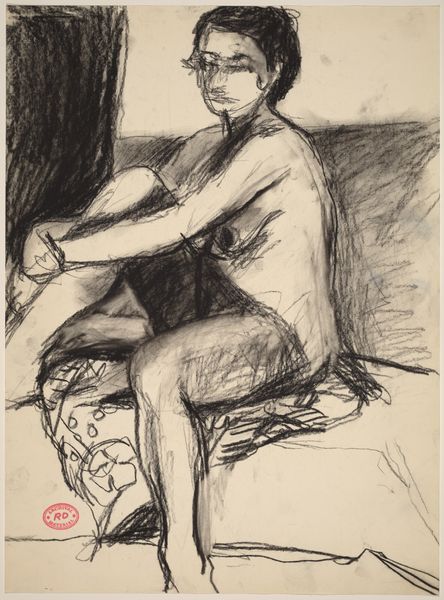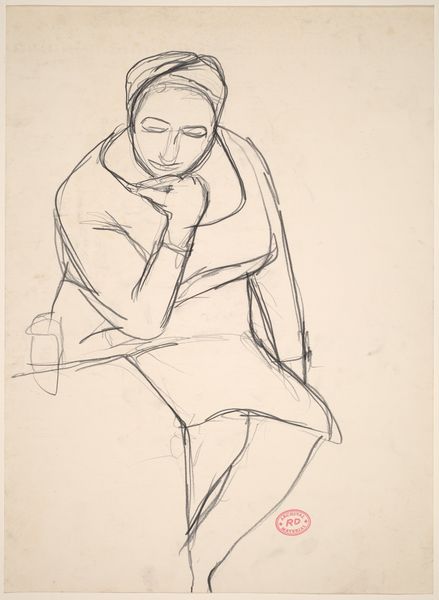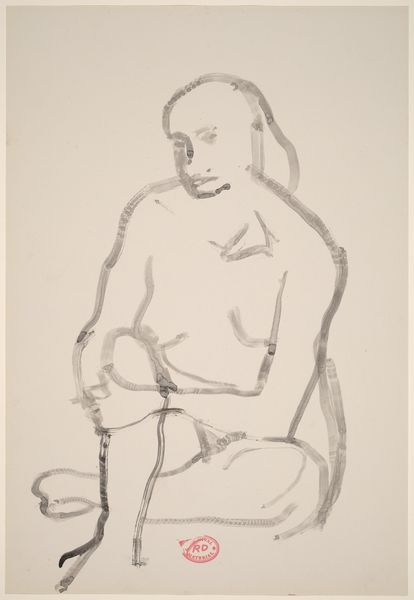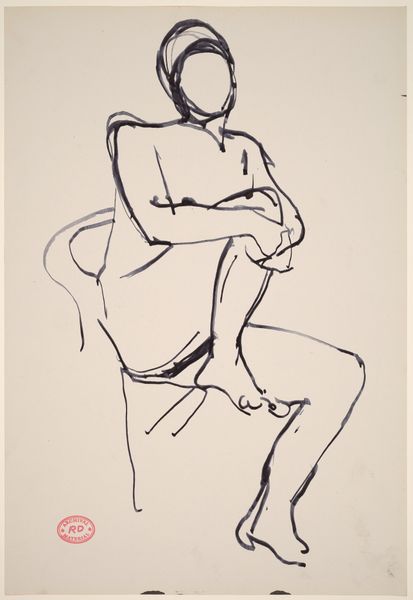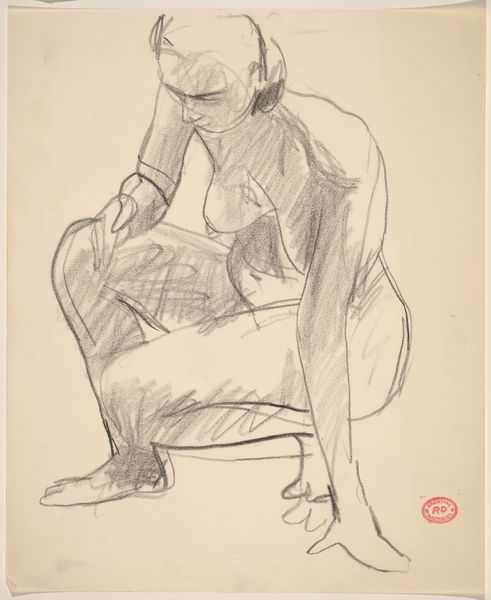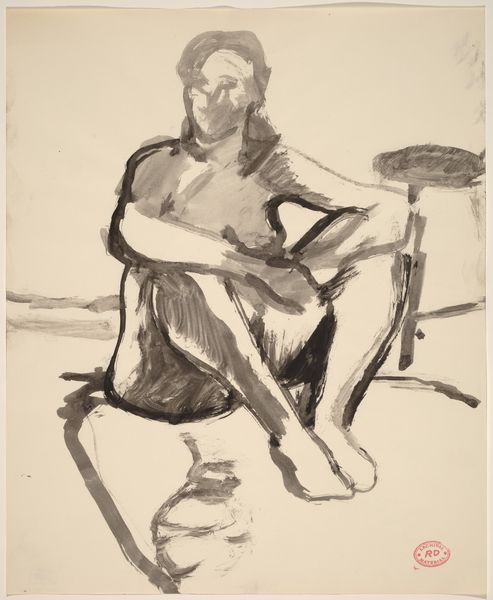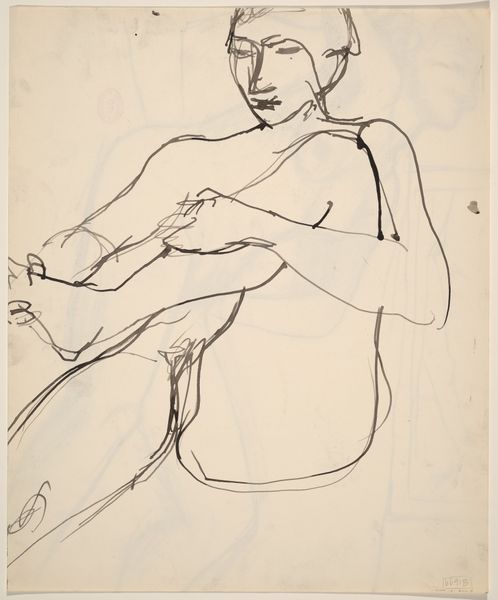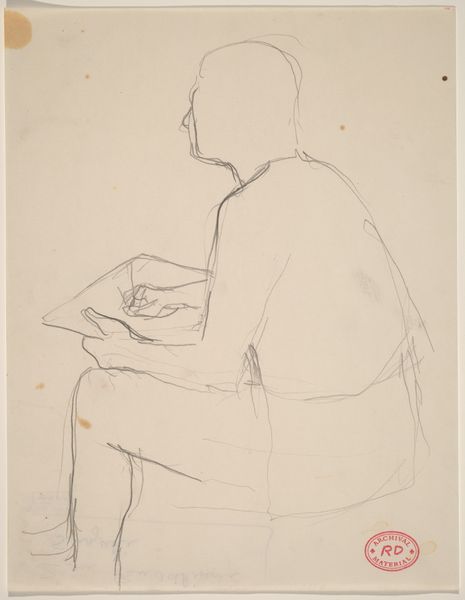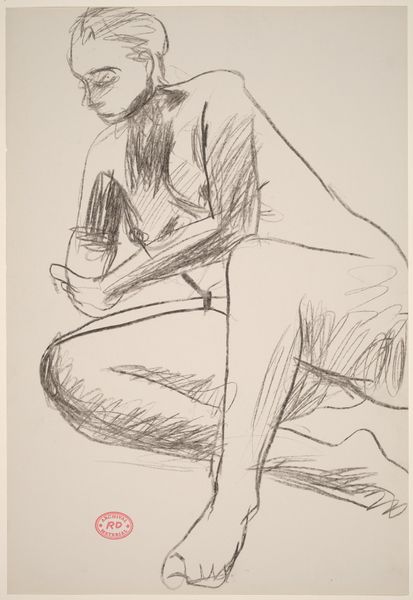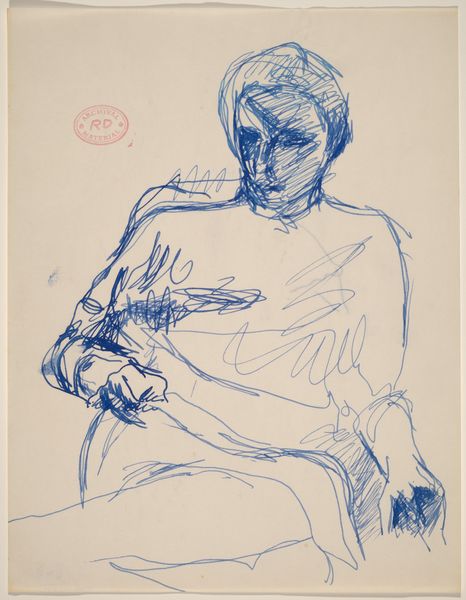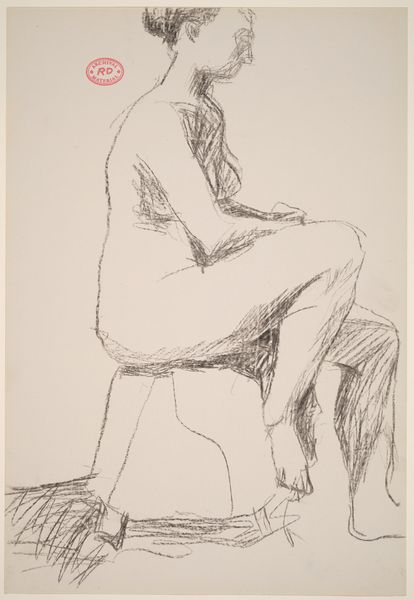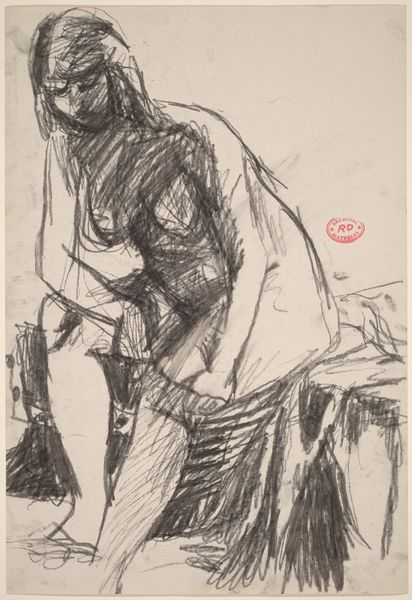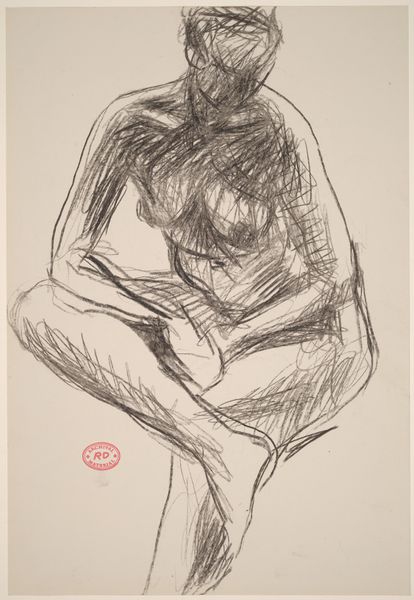![Untitled [female nude seated on floor] [recto] by Richard Diebenkorn](/_next/image?url=https%3A%2F%2Fd2w8kbdekdi1gv.cloudfront.net%2FeyJidWNrZXQiOiAiYXJ0ZXJhLWltYWdlcy1idWNrZXQiLCAia2V5IjogImFydHdvcmtzLzZiMjkxNzRlLTIwZDMtNGE4Ny05MmYwLTk1YWM5Nzc3OWFlMi82YjI5MTc0ZS0yMGQzLTRhODctOTJmMC05NWFjOTc3NzlhZTJfZnVsbC5qcGciLCAiZWRpdHMiOiB7InJlc2l6ZSI6IHsid2lkdGgiOiAxOTIwLCAiaGVpZ2h0IjogMTkyMCwgImZpdCI6ICJpbnNpZGUifX19&w=3840&q=75)
Untitled [female nude seated on floor] [recto] 1955 - 1967
0:00
0:00
drawing, pencil
#
portrait
#
pencil drawn
#
drawing
#
pencil sketch
#
figuration
#
bay-area-figurative-movement
#
pencil drawing
#
pencil
#
abstraction
#
portrait drawing
#
nude
#
modernism
Dimensions: sheet: 43.3 x 35.4 cm (17 1/16 x 13 15/16 in.)
Copyright: National Gallery of Art: CC0 1.0
Curator: Welcome. Before us is Richard Diebenkorn's "Untitled [female nude seated on floor] [recto]," likely created sometime between 1955 and 1967. The medium here is graphite pencil on paper. Editor: My first impression? It feels…intimate. Vulnerable. The figure's posture, the way she's drawn in on herself, it's like peering into a private moment. Curator: The linear quality is quite striking. Notice how Diebenkorn uses the pencil—the varying weights and densities create both form and shadow. He seems less interested in exact representation and more in capturing the essence of the pose. The contour lines, while present, feel exploratory, almost hesitant. Editor: Hesitant, yeah, like the drawing itself is a search. I’m drawn to the areas of concentrated shading versus the lightness elsewhere. It almost feels unfinished, yet that rawness, those visible corrections… they're so powerful. Gives the figure a kind of weighty presence even in its incompleteness. Curator: Precisely. It reflects Diebenkorn’s interest in the dynamic interplay between representation and abstraction, typical of modernism. The nude is presented not as an object of desire, but rather as an exercise in form, in spatial relationships, even a commentary on mark-making itself. There's a tension between the solidity suggested by the darker values and the flatness implied by the blank page. Editor: I get the abstract reading, for sure, but I also sense a quiet dignity in her posture, almost a sense of melancholy. Like she's sheltering. Curator: Perhaps. But note also the ambiguity in the face; the eyes are almost entirely shadowed. Diebenkorn has denied us the most direct avenue to her emotional state. Our interpretation is guided instead by formal cues: line, value, the overall compositional structure. Editor: True. And maybe it’s precisely that ambiguity that keeps drawing me back. The emotional core remains tantalizingly out of reach, leaving the viewer to fill in those spaces with their own understanding of solitude or self-reflection. It's like Diebenkorn isn't just showing us a figure, but an emotion trying to find its shape. Curator: Well observed. In this exploration, we see not only the subject, but also Diebenkorn's distinct artistic approach at play. Editor: Exactly. For me, it's a beautiful reminder that the most profound art often lies in that space between what is seen and what remains unseen.
Comments
No comments
Be the first to comment and join the conversation on the ultimate creative platform.
